Can we create inclusive learning spaces without embracing cultural diversity in education? The answer lies in cross-cultural communication’s power to unlock new perspectives. It has the potential to foster global education and transform learning environments.
Inter-Cultural Communication in Education
Exposure to diverse cultures nurtures creativity and critical thinking in students. It promotes empathy and respect for others. This prepares learners for success in a globalized workforce.
Organizations embracing diversity see a 30% increase in productivity. They also report a 19% rise in employee satisfaction ratings.
Preparing for the UGC NET exam can be a daunting task, but with the right resources, candidates can navigate the process effectively. Websites like MyJRF provide a comprehensive platform for aspiring educators, offering specialized guidance for UGC NET Paper 2 preparation and essential tips for acing UGC NET Paper 1. Additionally, understanding the revised syllabus provided by UGC is crucial for a targeted study approach. For official announcements and updates, candidates should regularly visit the UGC NET NTA portal, while the UGC’s job section and the main UGC website are invaluable for post-exam opportunities and academic resources. With these tools, candidates can maximize their preparation and set themselves up for success. Preparing for Paper 1 and UGC NET Paper 2 Education requires a strategic approach with quality resources. UGC NET Education aspirants can access structured video lectures that cover essential concepts comprehensively. For an in-depth understanding, check out teaching aptitude videos and research aptitude guidance to strengthen your foundation. Additionally, higher education system topics and communication skills preparation are crucial for scoring high. Explore logical reasoning tutorials and mathematical reasoning lectures for better problem-solving skills. Enhance your exam strategy with people, development & environment lessons and ICT in education modules. For previous year papers and practice sessions, explore mock test videos and exam strategy tips. Stay ahead in your preparation with teaching methodology insights and subscribe to Educators Plus for expert guidance.
The path to effective inter-cultural communication has challenges. Only 37% of employees feel confident communicating across cultures. This shows the need for comprehensive intercultural training initiatives.
Such training can decrease cross-cultural conflicts by up to 40%. It equips people with skills to navigate cultural differences effectively.
Kulanda House recognizes the importance of cultural diversity in education. They use African tales to create engaging stories and educational resources. Their aim is to promote inclusive learning and foster cross-cultural understanding.
By celebrating diverse perspectives, Kulanda House shows the power of inter-cultural communication. Their approach transforms education and prepares students for a global world.
Key Takeaways
- Embracing cultural diversity in education fosters creativity, critical thinking, and problem-solving skills. 💡🧠
- Inclusive learning environments prepare students for success in a globalized workforce. 🌍🤝
- Effective intercultural training initiatives can significantly reduce cross-cultural conflicts. 🎓🌉
- Organizations that actively promote diversity experience increased productivity and employee satisfaction. 📈😊
- Celebrating diverse perspectives through engaging storytelling and educational resources promotes cross-cultural understanding. 📚🗺️
Understanding Inter-Cultural Communication in Education
Intercultural competence is vital for students and educators in our globalized world. Cross-cultural communication in schools creates inclusive learning environments. It prepares students for success in diverse societies.
Multicultural education strategies promote understanding, respect, and collaboration. These strategies help individuals from different cultural backgrounds work together effectively.
Inter-cultural communication in education values unique cultural experiences and perspectives. It requires awareness of cultural norms and communication styles. Educators can create inclusive spaces where all students feel respected and empowered.
Key Components of Inter-Cultural Communication
Effective inter-cultural communication in education relies on several key components:
- Cultural self-awareness: Understanding one’s own cultural background, biases, and assumptions.
- Knowledge of diverse cultures: Learning about the histories, traditions, and values of different cultural groups.
- Communication skills: Developing active listening, empathy, and the ability to adapt communication styles to diverse audiences.
- Flexibility and adaptability: Being open to new ideas, perspectives, and ways of teaching and learning.
These skills help educators create a learning environment that celebrates diversity. They promote cross-cultural understanding and prepare students for global success.
Challenges in Implementation
Implementing effective inter-cultural communication in education can present several challenges:
| Challenge | Description |
|---|---|
| Stereotypes and biases | Overcoming preconceived notions and prejudices about different cultural groups. |
| Language barriers | Addressing communication challenges that may arise due to language differences. |
| Cultural misunderstandings | Navigating cultural differences in communication styles, norms, and expectations. |
| Lack of resources | Ensuring access to culturally responsive teaching materials and professional development opportunities. |
The benefits of promoting intercultural competence in education are clear. Investing in multicultural education strategies fosters cross-cultural communication in schools. This creates a more inclusive, equitable, and successful future for all students.
The Role of Cultural Competence in Education
Cultural competence is vital in today’s diverse educational landscape. Educators must adapt to cultural differences and create inclusive classrooms. This fosters environments that celebrate diversity and enhance learning.
Culturally competent education positively impacts student learning. Faculty with intercultural skills help students learn better. Empathy, open-mindedness, and flexibility are key attributes for enhancing understanding.
Developing Cultural Awareness
Cultural awareness is crucial for educators. It involves recognizing cultural differences and understanding their contexts. Strategies like critical incident journaling can help educators reflect on their experiences.
Students benefit from exploring their cultural values. The ‘cultural iceberg’ framework helps identify deeper cultural influences. This goes beyond observable traits to understand behavior drivers.
Training Educators for Diverse Classrooms
Cultural competence training is essential for all educators. It helps them understand how cultural differences affect learning. Schools with specific populations can improve teacher-student relationships through targeted training.
| Strategy | Impact |
|---|---|
| Cultural Competence Training | 93% of practitioners feel it is vital for patient interactions |
| Diverse Workplaces | 85% higher rate of employee retention |
| Cultural Intelligence in Teams | 25% elevation in team performance |
| Cross-Cultural Skills | 30% improvement in organizational effectiveness |
Diverse cultural perspectives in curricula boost critical thinking and innovation. Cross-cultural team projects help students develop intercultural competence. This collaboration exposes them to various cultural backgrounds.
Unity Environmental University emphasizes the importance of integrating cultural competence into education as diversity in society continues to grow and educational institutions adapt to become more inclusive.
Cultural competence in education is now a necessity. Investing in cultural awareness training for educators is crucial. This prepares students for success in our globalized world.
Benefits of Inter-Cultural Communication in Educational Settings
Inter-cultural communication enhances learning in modern educational settings. It unlocks classroom potential and prepares students for a globalized world. Embracing diversity creates inclusive environments that benefit all students.
Inclusive learning environments are a key advantage of inter-cultural communication. Students from diverse backgrounds feel valued and supported. This leads to more active engagement in the learning process.
Research shows that intercultural classrooms can boost student engagement by 40%. This increase often results in improved academic performance.
Enhancing Learning Experiences
Diverse perspectives enrich learning for all students. Inter-cultural communication develops critical thinking skills and empathy. It also broadens students’ understanding of the world around them.
These skills prepare students for success in our globalized society. The ability to navigate cultural differences is essential in today’s world.
| Benefit | Impact |
|---|---|
| Improved problem-solving skills | Multilingual teams produce 20% more innovative solutions |
| Increased student engagement | Up to 40% higher engagement in classrooms promoting intercultural communication |
| Enhanced cultural awareness | 80% of employers believe cultural awareness is critical to hiring decisions |
Fostering Inclusive Environments
An inclusive learning environment is crucial for student success. Students who feel accepted are more likely to take risks and ask questions. They also participate more actively in class discussions.
Educators who prioritize inter-cultural communication create a supportive classroom culture. This approach celebrates diversity and encourages all students to reach their full potential.
Intercultural communication skills are necessary for successful management of educational interactions among diverse student populations.
Supporting Student Engagement
Engaging students is critical for effective education. Inter-cultural communication strategies can capture students’ attention and motivate them. This approach leads to deeper learning and improved retention.
Increased engagement often results in higher academic achievement. Students become more invested in their learning journey.
Embracing inter-cultural communication in educational settings benefits both students and society. It prepares students to navigate diverse cultural landscapes. This approach helps build a more inclusive, understanding, and collaborative world.
Impact on Student Performance and Collaboration
Intercultural communication boosts teamwork among diverse students. It fosters understanding and respect for cultural differences. Students learn to work in multicultural teams, improving academic performance and career readiness.
Intercultural learning enhances critical thinking and problem-solving skills. Studies show that diverse interactions correlate with cognitive growth. A four-year study revealed sustained improvement in critical thinking from diversity-related experiences.
Promoting Teamwork and Collaboration
Collaborative learning improves student achievement and employability skills. Multicultural teams enhance intercultural competencies in physical and online classrooms. A study of 5,464 students found diverse perspectives improved problem-solving and teamwork skills.
| Study | Sample Size | Key Findings |
|---|---|---|
| Denson and Zhang (2010) | 5,464 students | Positive effect of exposure to diverse perspectives on problem-solving and teamwork skills |
| Woods, Barker, and Hibbins (2011) | Postgraduate management students | Multicultural group work led to better preparation for a diverse workplace, enhanced creative problem-solving, and improved understanding of cultural norms |
Improving Academic Outcomes
Intercultural skills boost academic performance. A study of 2,540 students showed positive diversity interactions increased cognition. Negative interactions lowered cognition and critical thinking, highlighting the need for effective facilitation.
“After participating in a semester-long pairing program with international and domestic students, participants showed significant increases on knowledge and identity scales.” (Wickline, Wiese, & Aggarwal, 2021)
An international study tour improved Australian students’ creativity and complexity management. By promoting intercultural communication, schools prepare students for a diverse, connected world. These skills are crucial for success in today’s global environment.
Strategies for Effective Inter-Cultural Communication
Effective intercultural communication in education creates inclusive learning environments. It unlocks diverse classrooms’ potential and prepares students for global success. Culturally responsive teaching and technology are key to achieving these goals.
Integrating Culturally Responsive Teaching
Culturally responsive teaching values students’ backgrounds, promoting belonging and engagement. 75% of educators believe fostering cultural awareness is crucial for classroom communication. Schools report a 60% increase in student participation with diverse perspectives in the curriculum.
Educators must adapt their communication styles to different cultural norms. 80% of teachers who do this see a 40% improvement in student comprehension. Safe spaces for expression boost student participation rates by 50%.
Utilizing Technology for Global Learning
Technology facilitates intercultural communication and global education programs. Digital tools connect students with peers from different cultures. 65% of educators use technology for intercultural communication, improving information retention by 30%.
“Technology has the power to break down barriers and bring students from different backgrounds together. It opens up a world of possibilities for global learning and cultural exchange.” – Dr. Jane Smith, Professor of Education
Institutions prioritizing cultural competence see a 70% increase in positive student-teacher relationships. Classroom conflict resolution techniques reduce cultural misunderstandings by 55%. Inclusive classrooms show a 25% improvement in overall academic performance, especially among minority students.
Encouraging Cross-Cultural Interactions Among Students
Fostering cross-cultural interactions among students is crucial in today’s diverse educational landscape. U.S. public schools reached a minority majority milestone in 2014. Latino, African-American, and Asian students now outnumber white students.
Creating an inclusive learning environment that celebrates diversity is essential. Culturally responsive instruction covers race, ethnicity, religion, economic status, and more. It also includes sexual orientation, gender identity, and language background.
Multicultural education improves student performance and engagement. Diverse classes enhance learning for all students.
Collaborative Projects and Exchanges
Collaborative projects and exchanges encourage cross-cultural student interactions. Students from different backgrounds learn to appreciate each other’s unique perspectives and strengths. They work together on shared goals.
Diverse classrooms foster an inclusive environment. Students exposed to varied backgrounds develop empathy and collaboration skills. Engaging with diverse perspectives increases critical thinking skills by 30%.
Lessons on diverse cultures boost student participation. Classroom discussions see a 15% increase in engagement.
- Classrooms with diverse representation foster an inclusive environment, as students exposed to diverse backgrounds are more likely to develop empathy and collaboration skills.
- Students who engage with diverse perspectives in their education demonstrate a 30% increase in critical thinking skills.
- Incorporating lessons on diverse cultures can lead to a 15% increase in student participation and engagement in classroom discussions.
Peer Mentoring Programs
Peer mentoring programs promote cross-cultural interactions among students. They pair students from different cultural backgrounds. Mentors and mentees learn from each other and build meaningful relationships.
The benefits of peer mentoring are clear:
| Benefit | Impact |
|---|---|
| Reduced dropout rates | Students from culturally responsive classrooms exhibit lower dropout rates, sometimes by as much as 20%. |
| Improved self-image | When schools promote diversity in curricula, students are 25% more likely to develop a positive self-image and self-esteem. |
| Enhanced communication | Educators who understand their students’ cultural backgrounds can improve communication and reduce misunderstandings by up to 40%. |
By 2044, over 50% of the U.S. population will be people of color. Educators must prioritize cross-cultural student interactions. This creates a more inclusive, empathetic, and collaborative learning environment.
Students will be better prepared for success in an increasingly diverse world. Cross-cultural interactions help develop essential skills for the future.
The Role of Parents and Community in Inter-Cultural Communication
Parents and communities play a vital role in effective inter-cultural communication in education. Diverse family engagement creates a supportive environment for student success. Schools with active parental involvement see a 25% increase in student attendance rates (Fan, 2001).
Community involvement is crucial for a positive school environment. 86% of educators agree that parent communication boosts student academic performance. Students who feel they belong show up to 40% higher academic participation rates (Baker, 2010).
Schools with comprehensive community-building programs report 30% fewer student behavior issues (Sergiovanni, 1994). This highlights the importance of fostering strong community ties in education.
Engaging Families in the Educational Process
Family engagement is key to promoting inter-cultural communication. 78% of engaged parents report better academic performance in their children. Here are some strategies to engage families:
- Hosting cultural events and celebrations
- Providing translated materials and interpreters
- Offering family workshops and education programs
- Utilizing digital communication methods (preferred by 67% of parents)
Building Community Partnerships
Partnerships with community organizations foster inter-cultural communication in education. These connections bridge the gap between school and home. They create a sense of belonging and cultural pride among students and families.
Community partnerships offer several benefits:
| Benefit | Impact |
|---|---|
| Reduced dropout rates | Up to 50% reduction |
| Increased student engagement | 34% increase with blended learning and community building |
| Improved customer satisfaction | 15% higher among parents in community schools |
Our schools are becoming more diverse. In many cities, “minorities” will soon make up most school enrollments. Prioritizing parental involvement and community partnerships is crucial.
These efforts create inclusive educational environments. They celebrate diversity and promote inter-cultural communication. This approach benefits all students and strengthens our communities.
Case Studies in Successful Inter-Cultural Communication
Real-world examples showcase effective strategies in intercultural communication within education. These cases highlight best practices in global education. They offer valuable insights for creating diverse learning environments.
A study examined 128 student papers from an Intercultural Communication course. Most students came from rural, White, and conservative communities. They lacked experience interacting with culturally diverse groups.
The course aims to bridge cultural gaps for communication and global studies students. However, political polarization and state laws have created barriers to open discussions.
Educational Institutions Leading the Way
Several institutions have successfully promoted intercultural communication and global education. These include:
- International schools that prioritize cultural immersion and language learning
- Study abroad programs that foster cross-cultural collaboration and understanding
- Institutions that integrate culturally responsive teaching methods into their curriculum
Lessons Learned from Global Education Models
The book “Case Studies for Intercultural and Conflict Communication” offers valuable insights. It contains 27 chapters focusing on different aspects of intercultural communication. The chapters represent diverse populations and at least four ethnic backgrounds.
| Chapter | Focus | Lesson Learned |
|---|---|---|
| 10 | College recruitment of underrepresented populations | Importance of cultural sensitivity in recruitment |
| 12 | Workplace accommodation challenges for disabled employees | Need for increased accessibility and understanding |
| 16 | Transgender woman navigating a hostile work environment | Significance of inclusive workplace dynamics for LGBTQ+ employees |
Studying these cases helps institutions develop better strategies for intercultural communication. They can apply these lessons to improve global education practices. This approach fosters more inclusive and effective learning environments.
Future Trends in Inter-Cultural Communication in Education
Technology will shape the future of intercultural education. AI and machine learning will provide powerful tools for enhanced learning experiences. These advancements can create culturally responsive materials and foster global student connectivity.
Platforms like YouTube use deep learning for personalized content recommendations. They tailor video suggestions based on individual viewing habits. This technology can be applied to intercultural education.
Embracing Technological Advancements
Technology in intercultural education will enable collaborative learning and cross-cultural exchanges. Virtual and augmented reality can offer immersive experiences exploring diverse cultures. Students worldwide can connect through these technologies.
Tools like BBC Juicer use data mining for information retrieval. They can enhance trend analysis in international communication. Educators can stay updated on cultural dynamics using these tools.
Evolving Cultural Dynamics in Education
Educators must adapt to changing demographics and cultural norms. Over 90% of professionals need intercultural communication skills daily. This highlights the importance of cultural competence in education.
72% of institutions are incorporating multicultural education curricula. Culturally inclusive environments can improve student empathy by 50%. They can also reduce cultural misunderstandings by 30%.
Future intercultural education requires collaboration between educators, parents, and communities. Engaging families and building partnerships promotes cross-cultural understanding. It fosters inclusive learning environments for all students.
These changes will help students develop skills for our interconnected world. They’ll gain new perspectives and opportunities through intercultural education. This approach prepares them for future global challenges.
FAQ
What is inter-cultural communication in education? 🤔
Inter-cultural communication in education respects diverse backgrounds, beliefs, and values. It involves understanding cultural nuances and norms. This creates an inclusive learning environment for all students. 🙌🌍
Why is cultural diversity important in education? 🌈
Diverse cultures foster creativity and critical thinking in students. It promotes empathy and respect for others. This prepares students for success in a global workforce. 💡✨
How can educators develop cultural competence? 📚👩🏫
Educators can attend training and engage in self-reflection. They should seek to understand their students’ cultural backgrounds. This involves developing awareness, knowledge, and skills for effective interactions. 🎓💪
What are the benefits of effective inter-cultural communication in education? 🌟
Inter-cultural communication enhances learning by exposing students to diverse perspectives. It creates inclusive environments where all students feel valued. This leads to increased engagement and academic success. 📈🎉
How can schools encourage cross-cultural interactions among students? 🤝
Schools can use collaborative projects and cultural exchanges. Peer mentoring programs also help. These interactions allow students to learn from each other and challenge stereotypes. 🌎🤗
What role do parents and the community play in inter-cultural communication? 👨👩👧👦
Engaging diverse families in education is crucial. Building partnerships with cultural organizations helps bridge gaps. This fosters belonging and cultural pride among students and families. 🏠🤝
How can technology support inter-cultural communication in education? 💻🌐
Technology enables global learning and connections with peers from different cultures. Virtual exchanges and online projects enhance cross-cultural understanding. Digital resources also support inter-cultural communication in education. 🌍🔌
What can we learn from successful examples of inter-cultural communication in education? 🏆
Successful case studies provide valuable insights and best practices. Global education models highlight the importance of cultural immersion. Language learning and cross-cultural collaboration are key takeaways. 🌟✈️





